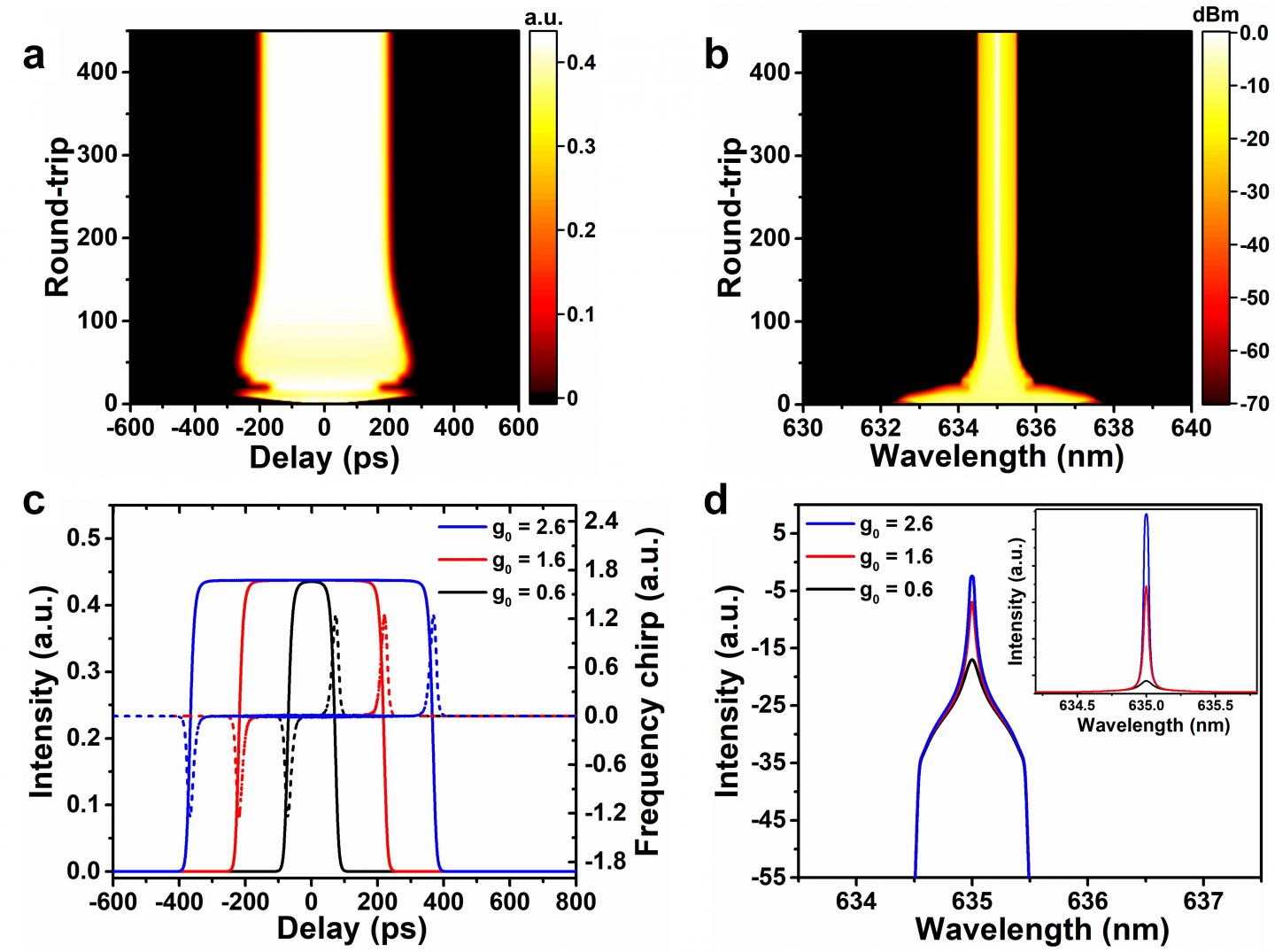
Credit: by Jinhai Zou, Chuchu Dong, Hongjian Wang, Tuanjie Du, and Zhengqian Luo
Mode-locked fibre lasers generating ultrashort pulses with the advantages of robustness, compactness and excellent beam quality are of tremendous interest in applications such as laser material processing, medicine, precision measurement, biological photonics, ultrafast spectroscopy, optical communication and scientific research. In recent decades, mode-locked ultrafast fibre lasers operating in the near-infrared and mid-infrared spectral regions have been well developed, but ultrafast laser sources in the visible spectral region (380-760 nm) still heavily rely on Ti:sapphire mode-locked oscillator and optical parametric amplification systems (or frequency doubling of near-infrared ultrafast lasers), suffering from a large footprint and an extremely high cost. Researchers desire an alternative ultrafast visible laser solution that is compact, low cost, user friendly and maintenance free. Passive mode locking in all-fibre format could satisfy all these demands, and therefore, there is strong research motivation to develop passively mode-locked fibre lasers in the visible region.
In a new paper published in Light Science & Application, Zhengqian Luo and colleagues from the Department of Electronic Engineering, Xiamen University, China demonstrated a visible-wavelength passively mode-locked all-fibre laser. By solving the Ginzburg-Landau equation, they found that the dissipative soliton resonance mechanism can be applied to establish stable visible-light mode-locked pulses in a large normal-dispersion fibre cavity. Based on the numerical results, they further experimentally realized an all-fibre visible-wavelength passively mode-locked laser. The laser generates picosecond pulses of light at 635 nm and represents an essential step towards miniaturized ultrafast fibre lasers in the visible light range. The reported work lays the foundations for photonic devices for use in applications such as visible light communications, laser material processing, femtosecond laser-frequency comb, and scientific research.
The 635 nm mode-locked laser with an all-fibre figure-eight cavity uses a Pr/Yb codoped ZBLAN fibre as the visible gain medium and a nonlinear amplifying loop mirror as the mode-locking element. These scientists summarize the innovation research work as follows:
“We numerically and experimentally demonstrated a 635 nm all-fibre passively mode-locked laser for the first time. First, by solving the Ginzburg-Landau equation using the standard split-step Fourier method, the formation and evolution of 635 nm mode-locked pulses were predicted and analysed. Then, based on our numerical results, we further experimentally demonstrate the stable generation of 635 nm passively mode-locked pulses with a tunable picosecond duration, a radio-frequency signal-to-noise ratio of 67 dB and a narrow spectral bandwidth of 1 nm) and modulated optical spectrum.”
“The presented technique and method can be used for the generation of other visible-wavelength ultrafast fibre lasers. It is an essential step towards miniaturized ultrafast fibre lasers in the visible light range. This breakthrough will lay the foundations for visible ultrafast fibre lasers for use in applications such as optical communications, biomedicine, material processing, microimaging, femtosecond laser-frequency comb, ultraviolet ultrafast generation directly by frequency doubling and scientific research.” the scientists forecast.
###
Media Contact
Zhengqian Luo
[email protected]
Related Journal Article
http://dx.





